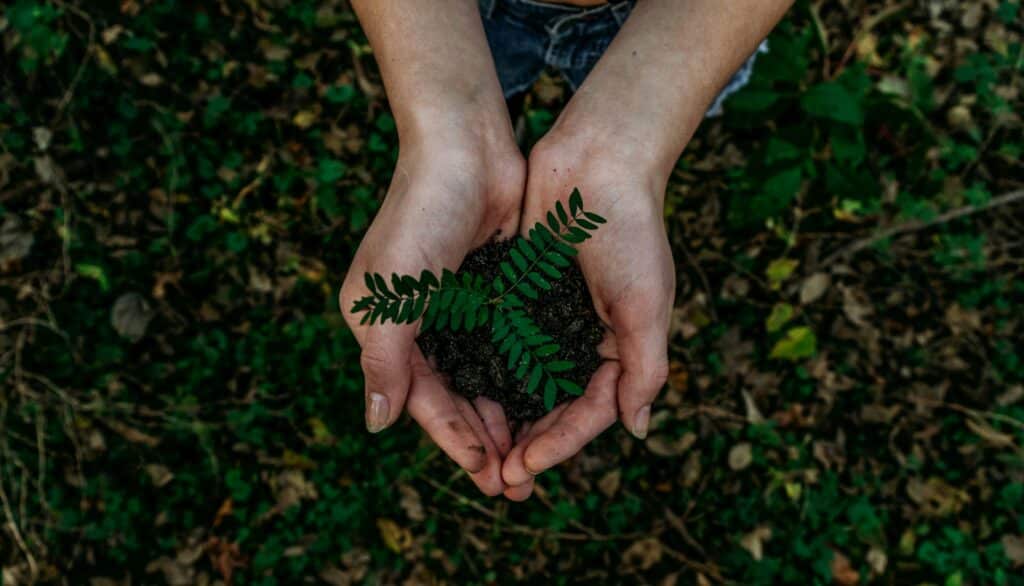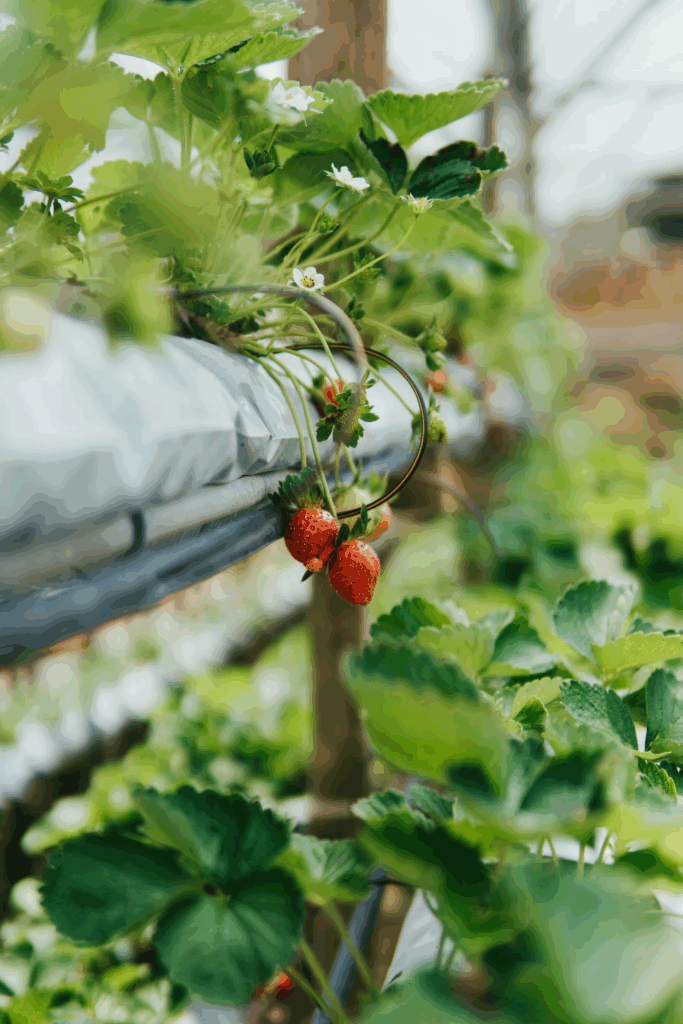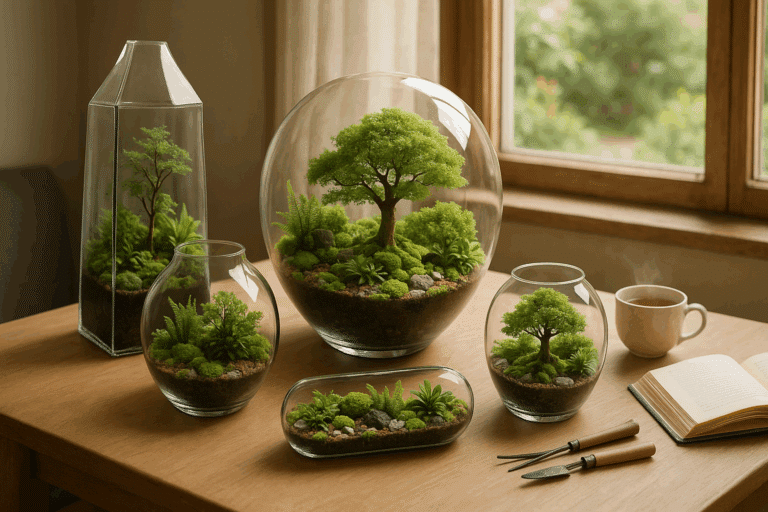Discover the world of Aquaponic Fish Tank Gardening, a unique eco-friendly system that enables you to grow fresh produce and raise fish simultaneously. A solution that provides nourishment, while also contributing to the preservation of our planet.
Delve into the intricacies of this fascinating gardening system, as we present a comprehensive guide to setting up your own aquaponic garden. Understand the science behind it, the benefits that it brings, and the practical steps to create one at home. This eco-friendly approach is more than just a hobby; it’s a lifestyle shift that promotes sustainability and self-sufficiency.

Let’s explore together the fundamental aspects of this environmentally-friendly gardening method. From selecting the right fish species and plants, to maintaining the balance of this self-sustaining ecosystem. It’s a captivating journey that combines the joy of gardening with the excitement of aquarium keeping, resulting in a vibrant and productive garden tank.
So, gear up for a deep dive into sustainable gardening with an aquaponic fish tank. Unearth the secrets of this extraordinary system, designed to help cultivate a greener lifestyle. This could be your first step towards a sustainable future, where you grow your food and contribute to the well-being of our planet. 🌱🐠🌍
Managing Water Quality and System Balance
One of the most critical aspects of running a successful aquaponic fish tank garden is maintaining water quality. Because both plant health and fish wellbeing depend on a delicate balance of nutrients, pH levels, and temperature, constant monitoring is key. A reliable water testing kit should be used weekly to measure ammonia, nitrite, nitrate, and pH levels. The ideal pH for most aquaponic systems ranges from 6.8 to 7.2, allowing for optimal plant nutrient uptake and fish comfort.
In addition to chemical balance, the physical aspects of the water—such as clarity and oxygenation—must be addressed. An aquarium air pump or an air stone helps maintain adequate oxygen levels, which is essential not just for the fish but also for the beneficial bacteria that convert waste into usable nutrients for plants. If your water turns cloudy or begins to smell, this may be a sign of overfeeding or inadequate filtration, both of which can be rectified with proper system adjustments.
Lighting and Temperature Control
Though aquaponic gardens can thrive indoors, proper lighting is crucial for plant growth. If you’re not placing your setup near a sunlit window, installing LED grow lights with a full spectrum is recommended. These simulate natural sunlight and support photosynthesis throughout the day. Aim for 12 to 16 hours of light daily for most leafy greens and herbs.
Temperature also plays a significant role in the health of your aquaponic system. Most systems flourish between 68°F and 75°F (20°C to 24°C). Sudden fluctuations can stress fish and inhibit plant development. In colder climates, consider using a water heater to maintain stable conditions, especially if you’re growing tropical fish like tilapia.
Maintenance and Troubleshooting
A well-maintained aquaponic fish tank garden requires weekly tasks, including checking water parameters, topping off evaporated water with dechlorinated tap water, and trimming plants. Overgrown roots can clog pipes or pumps, so occasional pruning is beneficial. Similarly, inspect fish for signs of illness, such as unusual swimming behavior, loss of appetite, or visible lesions. Isolating affected fish promptly helps prevent the spread of disease.
Sometimes plants may show signs of nutrient deficiency—yellowing leaves, stunted growth, or wilting. This can often be corrected by improving feeding practices or ensuring a strong colony of nitrifying bacteria is present to complete the nitrogen cycle.
Educational and Decorative Value
Beyond practicality, aquaponic fish tank gardens serve an aesthetic and educational purpose. They make excellent centerpieces in living rooms, kitchens, or classrooms, showcasing the beauty of sustainable living. Watching fish swim beneath flourishing greens offers a tranquil, meditative experience that many find soothing.
For families with children, these systems are a wonderful educational tool. They provide a hands-on way to learn about biology, ecology, and the principles of sustainability. By observing how waste turns into nourishment, children gain a concrete understanding of natural cycles and the importance of environmental stewardship.
Designing the System
The most common aquaponic system designs are media-filled beds, nutrient film technique (NFT), and deep water culture (DWC). The choice of design depends on the available space, cost, and personal preference. The system should also include a biofilter to provide a habitat for beneficial bacteria, and a sump tank to regulate water levels.
Monitoring and Maintenance
Regular monitoring and maintenance are essential to keep the system balanced. Regular tasks include feeding the fish, checking water parameters, and monitoring plant health. This practice will ensure that your aquaponic garden thrives, providing you with fresh produce and fish for years to come.
The Benefits of Aquaponic Fish Tank Gardens
Low Maintenance Once Established
After the initial setup and cycling process, aquaponic systems tend to require less maintenance than traditional gardening. You won’t need to weed, till soil, or deal with many of the common soil-borne pests and diseases. This makes aquaponic gardening particularly appealing for those with limited time or physical ability to maintain a conventional garden.

Dual Harvest: Plants and Fish
One of the most unique benefits of aquaponic gardening is the dual yield of fresh vegetables and fish. Depending on the species of fish you choose—like tilapia, catfish, or perch—you can raise them for food, adding a source of sustainable protein to your diet. Even if you don’t harvest the fish, ornamental species like koi or goldfish provide beauty and tranquility to the system, turning your indoor garden into a living ecosystem.
Reduction of Waste
Aquaponics eliminates runoff and fertilizer waste. Traditional gardening often leads to nutrient-rich water seeping into the ground or stormwater drains, which can harm local waterways. In an aquaponic system, nutrients are captured and reused, keeping the ecosystem balanced and waste to a minimum.
Educational and Therapeutic Benefits
Maintaining an aquaponic garden can be incredibly therapeutic. The gentle bubbling of water, the vibrant greenery, and the motion of fish all contribute to a calming atmosphere. Moreover, aquaponics is increasingly being adopted in educational settings—from schools to community centers—to teach principles of biology, sustainability, chemistry, and engineering.
Challenges in Aquaponic Gardening
Initial Setup Complexity
Setting up a functioning aquaponic system requires careful planning and an upfront investment in equipment such as tanks, grow beds, water pumps, and filtration. Additionally, getting the system “cycled”—establishing a healthy population of nitrifying bacteria—can take a few weeks and requires patience and monitoring.
Balancing Fish and Plant Needs
The dual nature of the system means that any imbalance can affect both fish and plants. For instance, if water becomes too acidic or too high in nitrates, it can harm fish and stunt plant growth. Maintaining the right pH, temperature, and oxygen levels is crucial and may involve frequent testing and adjustment.
Limited Crop Selection
While many leafy greens and herbs thrive in aquaponic systems, fruiting plants like tomatoes or peppers can be more challenging due to their higher nutrient demands. This can limit what you grow unless you’re prepared to scale or supplement your system.
Despite these challenges, the benefits of aquaponic gardening—sustainability, freshness, and dual yield—often outweigh the drawbacks, especially as experience and knowledge grow.
Additional Considerations and Long-Term Management
Initial Setup Cost (Continuação)
While the upfront investment for an aquaponic fish tank garden can be a barrier for some, it’s important to consider the long-term return on this investment. The ability to produce your own organic vegetables, herbs, and fish can lead to significant cost savings over time. Moreover, many components of the system—like tanks, LED lights, and pumps—are durable and have a long lifespan, especially when properly maintained. DIY enthusiasts may also reduce setup costs by repurposing materials or constructing parts of the system themselves.
In addition to direct savings on food, there are also indirect economic benefits. For example, growing your own food at home can reduce trips to the store, decrease reliance on produce that has been shipped long distances (cutting emissions and fuel costs), and minimize packaging waste. These eco-friendly practices not only reduce your carbon footprint but also help build a more resilient and self-sufficient lifestyle.
Technical Knowledge and Skills (Continuação)
Aquaponics is both an art and a science. Understanding the relationship between fish, plants, and bacteria is critical for a healthy and productive system. Beginners may feel intimidated at first by the need to regularly test water parameters such as pH, ammonia, nitrite, nitrate levels, and water temperature. However, numerous online communities, tutorials, and books are available to help new aquaponic gardeners gain confidence and expertise.
Many hobbyists find that learning the scientific aspects of aquaponics becomes an engaging and rewarding part of the experience. Watching the nitrogen cycle unfold in real-time, seeing plants flourish, and fish thrive in a perfectly balanced environment offers a unique satisfaction that few other gardening methods can provide. Moreover, this knowledge becomes a valuable skill set, applicable in both home and educational contexts.
Power Outages and Backup Solutions
One of the often-overlooked risks in aquaponics is system dependency on electricity. Pumps, filters, air stones, and heaters all rely on consistent power. A prolonged power outage can result in oxygen deprivation for fish, temperature drops, or water stagnation, all of which could negatively impact the health of the system.
To mitigate this risk, several backup strategies can be employed. Battery-powered air pumps, solar-powered backup systems, or even manual water circulation (via hand-pumping or siphoning) can be lifesaving in emergencies. Investing in a small generator may be a wise decision, particularly for larger systems or for those living in areas with frequent power outages.
It’s also advisable to incorporate system alerts or monitors—such as temperature and water level sensors—that send notifications to your phone when something is off-balance. This added layer of security ensures quicker response time and reduces the likelihood of systemic failure.
Scalability and Customization
One of the most appealing aspects of aquaponic gardening is its scalability. Beginners can start small, with a single fish tank and grow bed on a countertop or balcony. As confidence and experience grow, it’s easy to expand the system—adding more tanks, vertical towers, or separate grow beds for different plant varieties.
This modularity means aquaponics is equally suitable for a casual kitchen herb garden or a full-scale urban farming operation. Customizations like vertical NFT (nutrient film technique) channels, deep water culture beds, or media-based flood-and-drain systems can be added over time to enhance productivity and experimentation.
Conclusion
Despite the initial challenges of setup cost, technical learning curve, and power dependency, aquaponic fish tank gardening offers an immensely rewarding pathway toward sustainable living. It is a practice that merges technology, ecology, and food production in a single elegant system. With thoughtful planning, education, and a bit of hands-on experimentation, aquaponics can become a lifelong passion and a vital part of your household’s food security and environmental responsibility.
Conclusion
In conclusion, an Aquaponic Fish Tank Garden truly encapsulates the beauty of sustainable living. This innovative gardening system offers a unique platform to grow fresh produce and raise fish concurrently, under one roof. By utilizing aquaponics, not only are you contributing to a more sustainable lifestyle, but you’re also fostering a healthier environment for future generations.
This eco-friendly system demonstrates an excellent embodiment of sustainability, harnessing the natural symbiosis between fish and plants. The fish waste provides essential nutrients to the plants, and in return, the plants cleanse the water, creating a healthy habitat for the fish. The process is entirely organic, negating the need for harmful chemical fertilizers or pesticides, emphasizing the true essence of organic gardening.
Diving into sustainable gardening with an Aquaponic Fish Tank Garden can be an exciting venture for garden enthusiasts, environmentalists, and those looking to produce fresh food at home. It’s not just a step, but a leap towards environmental conservation and self-sustainability. By engaging in this holistic approach to gardening, you’re indeed contributing to the broader picture of eco-conscious living.
So, immerse yourself in the rewarding journey of aquaponic gardening. Create a sustainable oasis in your backyard, and experience the joy of harvesting fresh produce while nurturing aquatic life in your very own Aquaponic Fish Tank Garden. It’s truly gardening at its greenest and a testament to the beauty of eco-friendly living.



